 Not only does the early summer snow melting from forest service campgrounds lure RVers to their favorite forest camp, it also brings bears out of hibernation from the long winter sleep–and they are hungry! Mama bears with cubs have two or three mouths to feed, and early in the season some areas have yet to produce the bears’ favorite foods. This has drawn the bears down from the higher elevations to where food may be more abundant.
Not only does the early summer snow melting from forest service campgrounds lure RVers to their favorite forest camp, it also brings bears out of hibernation from the long winter sleep–and they are hungry! Mama bears with cubs have two or three mouths to feed, and early in the season some areas have yet to produce the bears’ favorite foods. This has drawn the bears down from the higher elevations to where food may be more abundant.
Unfortunately, it has also drawn bears into the same terrain as campers, hikers, mountain bikers, and RVers. Bears will also break into homes, car trunks, and ice chests searching for food. And though bears seem to have less fear of humans, it may be that we are sharing more and more territory each year. The Nevada Department of Wildlife reported receiving more than 1,500 bear complaints in 2007, and a bear biologist with the California Department of Fish and Game reports responding to ten bear calls per day just along Lake Tahoe’s west shore.
Other reports include a man having his face slashed when he tried to chase a bear away that was tearing apart his ice chest in a campground in the Eldorado National Forest west of Lake Tahoe, three mountain bikers and a dog being attacked by a grizzly bear on a trail in Alaska, and the New Jersey Department of Environmental Protection (DEP) stated that bear reports of all kinds for the first six months of 2010 to be 1,261–compared to the early 1990s when they only took 200 reports for the entire year.
Though black bear sightings are common in typical bear areas, they do not normally attack humans. However,if you do encounter a bear, it would be advisable to know what to do and what not to do. The following is the current advice from the NJ DEP.
* Do not feed or approach the bear.
* Remain calm and make the bear aware of your presence by speaking in a calm, assertive voice.
* Make sure the bear has an escape route.
* Yell, bang pots and pans or use an air horn to scare away the bear. Make yourself look as big as possible by waving your arms. If you are with someone else, stand close together with your arms raised above your head.
* The bear may swat the ground and utter a series of huffs, or make popping sounds by snapping its jaws. These are warning signs that you are too close. Slowly back away and avoid direct eye contact. Do not run.
* If a bear stands on its hind legs or moves closer, it may be trying to get a better view or detect scents in the air. It is usually not a threatening behavior.
* Black bears will sometimes bluff charge when cornered or threatened or when attempting to steal food. Stand your ground, avoid direct eye contact and then slowly back away. Do not run.
* If the bear will not leave, head for nearby shelter. Remember that black bear attacks are extremely rare. If a black bear does attack, fight back.
Remember that bears are attracted to the smell of food, and anything that is aromatic that could be food, like toothpaste. Leave no food out on your picnic table or in an ice chest. And pick up some bear spray–and keep it handy– just in case. Do not hike alone and make enough noise so any bears will hear you coming and stay away from you. Check with the visitor center or rangers where you are camping to find out current bear sightings and any areas to avoid.
Personally . . . I feel that, though I have never been attacked, that trying to remember all those rules when confronted by a black bear and your adrenaline starts to pump, may not be practical. So consider the following excerpt from an article on the North American Bear Center website from someone that has been dealing with wild bears for more than 40 years:
“Their most common aggressive displays are merely rituals they perform when they are nervous. When I see any bluster, I feel safe. It means the bear wants to talk about the problem it has with me. I have never had one come after me and hurt me. The only times I have been bitten is when I initiated the contact.
“Black bears have killed 61 people across North America since 1900. This no longer worries me. My chances of being killed by a domestic dog, bees, or lightning are vastly greater. My chances of being murdered are 60,000 times greater. One of the safest places a person can be is in the woods.” (my emphasis)
This is the Bear Center’s concise, practical advice:
What if I see a black bear?
 This is probably the most common question we hear.
This is probably the most common question we hear.
The standard answer nationwide is, “Speak calmly and back away slowly.” This is good advice. It identifies you as a person, shows that you are non-threatening, and gives the bear space.
Is following this advice necessary to avoid an attack? No.
Those are polite actions that respect a black bear’s comfort zone and help ease its anxiety. It is the gentle way to separate. More aggressive action would be more likely to increase a black bear’s anxiety and send it running.
Which action is safest? If a black bear is more than a few yards away, it hardly matters. Attacks are extremely rare despite what people do. Fearful, unnecessary advice about what to do, or not do, when a person sees a bear is often given by well meaning people.
You can buy bear spray from my Amazon/Healthy RV Lifestyle store. Check out my ebooks: BOONDOCKING: Finding the Perfect Campsite on America’s Public Lands, and 111 Ways to Get the Biggest Bang for Your RV Lifestyle Buck.
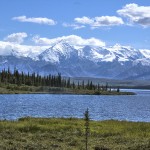
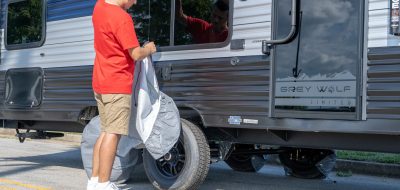

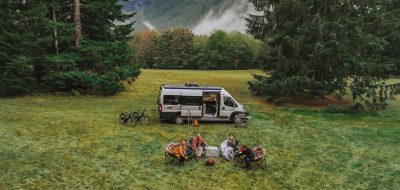
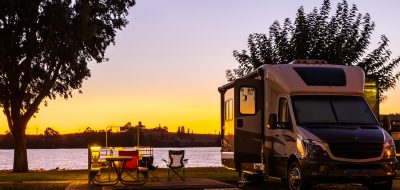

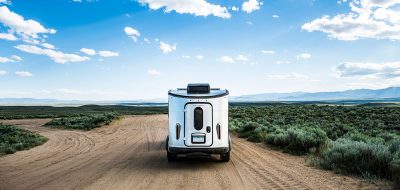

ZebPet
Great tips!
Unfortunately, Lake Tahoe area Black Bears will come to your camp, people there or not. This is where they can be dangerous and un-informed people can get hurt. If a bear comes into your camp and gets food, do not try to get it back. Just like a dog, they will protect their food. They will also protect cubs, so give them space until they leave.
Black Bear incidents in the Tahoe area have been so high in 2010, that authorities are considering a hunting season in 2011 ar 2012.
The 2011 snow pack is huge. Bears will be looking for food below snow level this spring. Under fed bears can be more agressive and if you see a Lake Tahoe area Black Bear with an ear tag, that bear has been agressive and removed from camping areas before.
Remember not to feed bears. A Fed Bear is a Dead bear because it will keep coming back to people looking for handouts.
Phil Schoner
I have volunteered for the Bear Management Office in Grand Teton National Park for 3 years. We keep visitors and bears safe from each other. Some comments on the above comments:
Bear spray is the most effective deterrent to a bear if he/she attacks you… over 90% effective. Guns of any kind are much less effective as you will find it very difficult to aim effectively as the bear charges you, no matter how macho you think you are. Bear spray is effective up to 30 feet. You spray it at the bears feet and the spray cloud rises to his face.
All brown bears are grizzley bears, some are just smaller than others due to their diet.
The most dangerous situation for a bear encounter is if you surprise a sow with her cubs, or encounter a bear feeding on a carcass.
No bear attack has been recorded on a group of 4 or more people, so hike in groups in bear country.
If a bear attacks you in a defensive manner (cubs or feeding) drop to the ground face down, cover your head and neck, and play dead. Keep your backpack on as it will protect you. If a bear attacks you offensively (he has been stalking you or is aggressive for no apparent reason such as cubs or a feeding situation) fight like you mean it. Make him know that he will have to fight for this meal.
Geoffrey Pruett
A few years ago a ranger was giving the “talk” to some back country hikers who exibited the usual short attention span.
“There are two types of bears on these trails, Black bears and Grizzly bears. The Black bears usual diet is berries, nuts and small rodents, the Grizzly bears diet is the previous plus fish and just about anything smaller than itself. Brown bears are smaller than Grizzlys and are usually not aggresive, Grizzlies are at times aggresive worst around cubs.” From the back of the group there is a raised hand, ” How do we tell them apart and protect ourselves”
“Well you all seem to have the usual pepper spray and bells to keep from suprising the bears, as to telling them apart look for bear sign”
“What is bear sign?” “Well it is bear poop found along the trail, the sign from brown bears has berry seeds and small bones in it, Grizzly sign usually contains small bells and smells like pepper”.
Jim
Art, “and without question statistically they pose a greater danger than bears.”
not to start a gun debate, but, where do you get your info?
Jim
Art Stebes
I see several people advice carrying large guns. One even suggested carrying one in a National Park. I’d suggest checking the law on that one. Vastly more people are killed in the US every year by guns then by bears. Frankly I’m much more afraid of people walking around with big guns, and without question statistically they pose a greater danger than bears. I’ll take my chances using the good advice in the article and stay away from people who might have a tendency to shoot up a campground because something spooked them.
Paul
I do think it wise to have a 12 gauge shotgun loaded with maximum stopping power shells at hand as a last resort. Some animals in the wild are sick or hunger crazed and might not behave as hoped. Shaking with fear and an abundance of adrenaline, you are more likely to hit and stop a bear or whatever with the shotgun than a pistol. Besides, I’m more worried about the weird and dangerous two-legged animals out there these days.
alpenliter
And if by chance you mistake a Grizzly Bear for a Black Bear, hold your ground and punch him in the nose when he attacks…..if that doesn’t work, use the sharpened bone that is left of your arm to poke him in the eye.
Robert B. Martin
A post-script to my previous message. I should have added that you don’t need a gun to protect yourself from bears. I believe that should be evident from the experiences I have related to you. IF you even see one now you should be able to frighten it away with no problem. Unless you get too close to a cub they are usually very timid and more afraid of you than you of them. I feel strongly that loaded firearms in National Park create a larger danger to other people than would your chance of being attacked by a bear.
Robert B. Martin
When I was 15 and 16 yrs old way back in the summers of 1959 and 1960 I went on one and two week hikes on the Appalachian Trail in the Smokey Mts. of N. Carolina. Back then, you saw bears every day. It was no big deal. You expected to see them and not to have seen them would have been very disappointing. They would follow you on the trail and out of sight at a safe distance, but sometimes when you stopped to rest a group of bears (anywhere from 1 to 5 or so) would come around the bend in the trail near where you were resting. It would catch them unawares and the lead bear would immediately stop with the ones behind him all bumping into him and each other like the Three Stooges. Then they would turn around and run. In the evening when we camped one of the first things we did was to gather a small pile of golf ball-sized (or slightly smaller) rocks beside our cooking fire. As we prepared our meal the bears, smelling the food, would begin to cautiously circle the campsite, slowly coming in closer and closer. Once they were what we considered “close enough” we shouted and threw rocks at them (or in the bushes near them – we weren’t trying to hit them, just scare them) and they would run back into the woods, only to start the process all over again until the food was put up (hung in a tree) and we climbed into our sleeping bags for the night. Some nights the bears would actually come into the camp looking for food as we slept. I woke up a couple of nights to see a bear sniffing around our gear. One actually took an obviously poorly cleaned mess-kit from beneath a sleeping boy’s head (he had a towel wrapped around it using it as a pillow). We found it ripped open and cleaner than it had ever been on the edge of our camp. I understand that now when a bear is seen on the trail an attempt is made to trap it and move it further back into the wild. In a way, that’s a shame. They never hurt any of us and were actually quite entertaining. But that was 50 years ago and times have changed.
Phil Mitchell
Ref BEARS: Bear safety is not to be taken lightly as your life is at stake. Do not rely on PC or BAMBIE measures. It is best to carry a large caliber handgun such as a .44 or 50 caliber magnum. Better yet a 12 gauge shotgun loaded with slugs.
Information is available on the Internet.
Phil Mitchell
former Survey Pilot, U.S. Fish & Wildlife Service
Jerry X Shea
Interesting. We are at Lake Tahoe on the South West end. Just had a bear come through the park this am. Went up a tree right in the middle of the park. Sat up there for about an hour and a half. When he came down they made sure he had an escape route, and he took off running back into the wood (for now).
David
Good advice all around.
Also depending on the state the National Park is in it may be legal to carry a suitable firearm for protection. This option is not to everyone’s approval but some may be unaware of it.
Frank
good article and smart reading for campers in bear country. bear spray deterrent is a powerful tool when dealing with a more aggressive animal. National park services are recommending hikers carry this spray…Studies and discussions are available through Google
Scott
great tips and information in this post. The big thing I keep in mind animals of any kind including bears are attracted to scents they think they want to eat which can include soap, deodorant, bandaids, chap stick, etc …. so anything that has a scent to it should be kept in the bear box or bear bag … it is always better to be safe then sorry